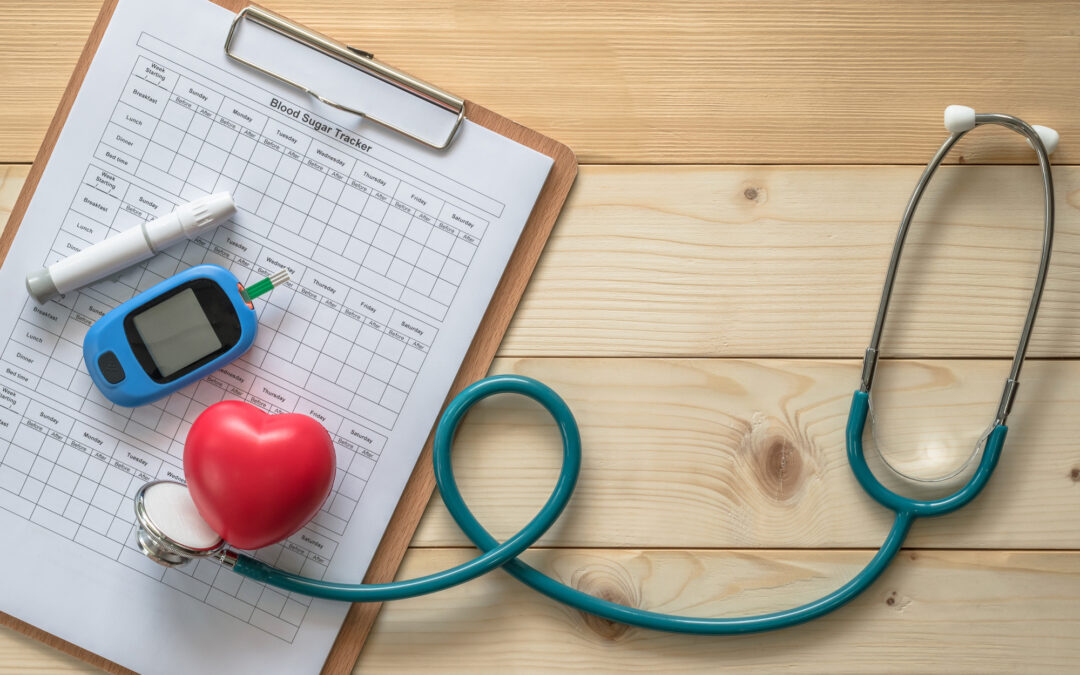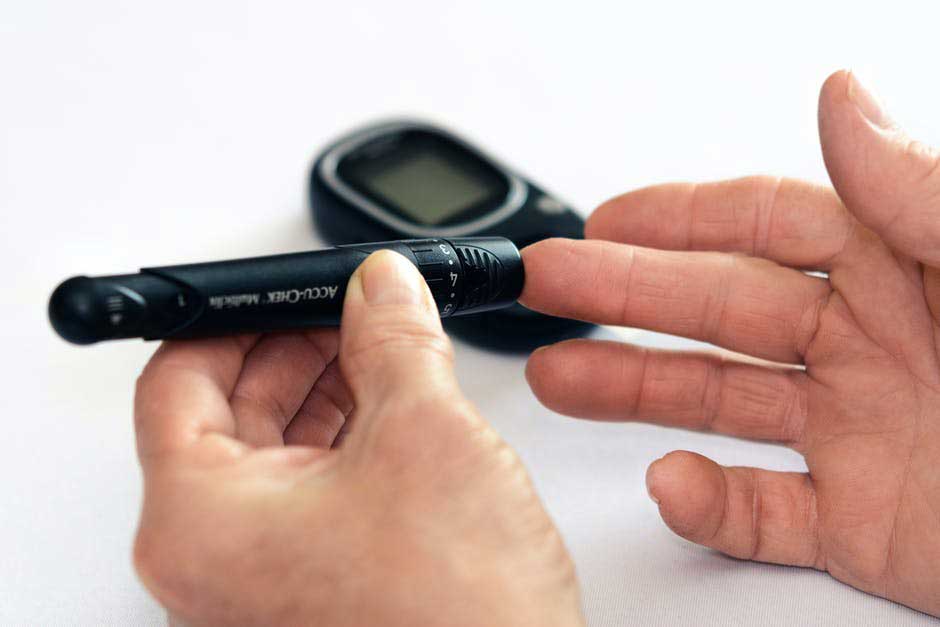
by Ingredia USA | Nov 8, 2022 | Blood Sugar Management
Diet and exercise are the key pillars of a healthy life, but they are even more critical for those who struggle to regulate their blood sugar. Believe it or not, 96 million Americans struggle with healthy blood sugar levels, especially after working out.
If you’re trying to keep up with your exercise routines, you probably want to know how to leverage your diet for the best results. Luckily, we’re here to help with that. Let’s talk about the best foods for post-workout recovery to promote healthy blood sugar levels. .
Foods to Avoid
Generally, not just after a workout, there are foods people should avoid to prevent insulin spikes. However, it’s even more important to refuel your body after a workout when your sugar levels are likely to drop.
Ideally, you want to eat primarily complex carbs and quality protein after a workout, with some healthy fats in the mix. Avoid starches and sugars whenever possible. Complex carbs are much better as they take longer to digest, which lowers the risk of blood sugar or insulin spikes.
For example, a handful of berries is better than an ice cream sandwich. Essentially, you want to look for slower-digesting carbohydrates with more nutritional value.
However, that doesn’t apply to anybody when you are trying to regular your blood sugar. Milk already has sugar in it, and adding more is a recipe for a blood sugar spike. Unless your blood sugar is dangerously low after your workout, avoid simple sugars such as:
- Candy
- Energy drinks
- Baked goods (muffins, donuts, cake, etc.)
- Soda
- Juice
- Sugary coffee
- Smoothies (most)
You should also avoid starchy foods, including white potatoes (such as fries, chips, etc.), white bread, and white rice. Maintaining your blood sugar levels is most important.
In general, you should also avoid deep-fried foods or foods that are extremely calorie-dense, like bacon or sausage. Eating smaller meals throughout the day with the right nutritional value is always recommended.
Nutrition for Post-Workout Recovery
When trying to maintain your blood sugar levels, there are certain foods you should try to eat after your workouts to refuel your body and start the recovery process. For example, you should eat some sugars to restore your body’s glycogen stores, which are often depleted after a workout, but they need to come from the right sources.
Always drink water before and after your workout, as post-workout hydration is critical for maintaining blood sugar levels and aiding in recovery. Aim for at least 16 oz before your workout and another 16 oz after.
Throughout the day, especially when exercising, women should aim to drink 11.5 cups of water, and men should aim to drink 15.5 cups.
Eggs and Whole Grain Toast
Whole-grain bread offers a rich nutritional portfolio loaded with fiber, complex carbohydrates, and some protein. Choose a thinly sliced bread if the carbs are too high, ensure that there is no added sugar, and find a bread you enjoy!
If you need some extra healthy fat or calories, add an avocado to your toast or nut butter for an extra protein kick. Are you looking to lower your fat intake? Try using only egg whites.
Don’t eat eggs? Scramble up some tofu for a similar texture and make it the way you like it!
For extra nutrition, scramble your eggs with onions, spinach, and tomatoes. These vegetables are delicious, low in carbs, and high in fiber and micronutrients to aid in recovery.
Meal idea: Egg sandwich or sunnyside up eggs on top of toast. If you need extra sugars, add a piece of fruit to the meal.
Oatmeal
Also, for people who prefer to work out in the mornings, half a cup of oats has 23 grams of net carbs, 4 grams of fiber, and 6 grams of protein. Have a glass of milk on the side (or in the oatmeal) for extra protein.
Meal idea: To avoid adding too much sugar, use berries instead of sugary fruits or nut butter for some extra protein.
Greek Yogurt and Fruit
Remember, berries are some of the best fruits you can eat to prevent unnecessary spikes, and they are also loaded with nutrition. Also, there are plenty of options for low-sugar or sugar-free Greek yogurt available today, so mix it in with some berries for a quality post-workout snack.
Meal idea: Need extra carbs? Put some low-sugar granola or overnight oats into your yogurt, along with some berries.
Protein Shake
Drink a protein shake along with some oatmeal, berries, or whole grains for a quality protein boost after your workout. A quality protein shake will help refuel your body, help with post-workout recovery, and post-workout hydration, and won’t cause sugar spikes.
Peanut Butter Sandwich
This should only be used with thinly sliced bread or low-carb bread, but always whole grain! Avoid using jelly or “fluff,” and have a glass of skim or 1% milk on the side. The amino acid profiles in bread and peanut butter create a “complete protein,” which means that it’s just as beneficial for post-workout recovery as eggs, meat, or dairy.
Be Consistent About Post-Workout Recovery
Diet and exercise are your best defense against insulin and blood sugar spikes, so take it seriously.
Now that you know some great post-workout recovery meals and nutritional advice, put it to use and keep yourself healthy! Stay up to date with our latest health & fitness news, and feel free to contact us with any questions.

by Ingredia USA | Sep 19, 2022 | Blood Sugar Management
About one in every ten Americans will develop diabetes. Type two diabetes is commonly referred to as a “lifestyle disease.”
Insulin is the hormone that our bodies use to turn the food we eat into energy. The more insulin our bodies produce, the more it increases the production of glycogen.
Fortunately, there is a simple way to control your insulin production. One of the benefits of building muscle is to control insulin resistance (the culprit of diabetes) and further prevent diabetes.
In this guide, we discuss a few reasons building muscle can protect you from developing diabetes. Keep reading to learn more.
Understanding Muscle Mass
Muscle mass, unlike lean body mass, exclusively refers to the muscles in your body. There is skeletal muscle, smooth muscle, and cardiac muscle. Smooth muscle and cardiac muscle make up different organs in your body.
For the sake of this guide, we’ll be discussing skeletal muscle. These are the large muscles all over the body that we exercise during strength training. These muscles can be built up, maintained, or shrink depending on your activity and age.
In preventing diabetes, the goal is to build a healthy amount of skeletal muscle to stabilize blood sugar.
The Relationship Between Blood Sugar and Muscle Mass
When it comes to preventing diabetes your weight matters. More specifically though, the proportion of your weight that is muscle is what matters.
Diabetes happens when your body no longer makes enough insulin or doesn’t metabolize it as it should. This is what causes the high blood sugar levels associated with pre-diabetes and diabetes. Insulin resistance if not managed can progress into type two diabetes.
Luckily, one of the best ways to reverse insulin resistance is through exercise, specifically strength training. Studies found a link between increased muscle mass and reduced insulin resistance and prediabetes.
For every 10% increase in muscle mass within the body, insulin resistance reduces by 11% and prediabetes reduces by 12%. The more muscle your body has, the more excess glucose your body can use or flush out.
Living a sedentary lifestyle greatly increases the risk of developing diabetes. This is not news, but in the past being lean was the only aspect of diabetes prevention highly valued.
Today doctors realize the ideal combination is being lean and also having a higher muscle mass ratio. This calls for a mix of aerobic exercise and at least two days of full-body strength training weekly.
The Benefits of Building Muscle Mass to Control Blood Sugar
One of the benefits of building muscle via strength and weight training is its ability to help you reduce your risk of developing diabetes. Adults who want to prevent type two diabetes are recommended to strength train at least two or three times a week. Building muscle mass to control blood sugar has been shown to help managers and improve the following diabetes precursors.
Burns Blood Sugar
When strength training your body uses up old glycogen stores to feed the muscles. Once the stored muscular glycogen is consumed, the body then turns to the liver glycogen and blood sugar.
By removing and consuming excess blood sugar, the next meal you have, your body will be eager instead of overwhelmed by the sugar in your meal.
Improves Glucose Storage
Trained muscles are better at storing glucose in the form of glycogen. When glucose is stored instead of roaming around freely in the blood, it helps to reduce overall blood sugar levels which further decreases the risk of developing diabetes.
Consistently elevated blood sugar, especially fasting blood sugar, is a sign of pre-diabetes.
Controls Cravings
Because increased muscle mass helps reduce sugar in the blood, it is responsible for helping maintain healthy blood sugar levels. When blood sugar levels plummet or skyrocket, we can have unstable energy and mood disruptions that prompt us to seek out unhealthy food.
A poor diet is a contributing factor in the development of diabetes among other diseases.
Simplifies Weight Loss
When you strength train you build lean muscle mass. The more lean muscle mass a person has, the easier it is for them to maintain and lose weight. Studies found that losing 5 to 10% of your current body weight can improve your overall HbA1c score.
Your HbA1c measures hemoglobin A1C and is the main test to help those manage diabetes. Because it denotes your blood sugar levels over three months it is also useful in preventing diabetes.
Burning muscle helps us lose weight and losing weight lowers A1C scores.
Targets Visceral Belly Fat
Visceral fat is encapsulating abdominal fat. It is incredibly dangerous and disrupts hormones, including insulin. Adipocytes release hormones that trigger insulin resistance. If left unchecked insulin resistance can become diabetes.
With strength training, aerobic exercise, and stress reduction you can reduce your body’s visceral fat.
The Best Foods for Regulating Blood Sugar Levels and Boosting Muscle Growth
If your goal is to build muscle, lose weight and steady blood glucose-protein needs to be your best friend. This macronutrient is abundant in many food sources, but it is important to consider the quality of the protein you consume. Some of the best sources of protein for building muscle mass include:
- Lean meats
- Fish and shellfish
- Nuts and legumes
These protein sources stem from nature and are shown to reduce blood sugar levels which can stabilize cravings.
Prevent Diabetes by Increasing Your Muscle Mass
It’s amazing that one of the benefits of building muscle is offsetting disease. If you’re wondering how to build muscle mass naturally make sure to strength train at least two times weekly and take a rest day between strength sessions.
Support your workouts with healthy protein consumption that matches your activity level.Consistently following the steps above can help you control blood sugar, lose weight, and prevent diabetes. Read more on other steps you can take to prevent diabetes.

by Ingredia USA | Jul 7, 2022 | Blood Sugar Management
We’ve all heard the advice that drinking 8 glasses of water per day is good for our health. However, most of us struggle to drink the recommended amount each day. According to one study, less than 25% of Americans partake in 8 glasses a day.
For those living with diabetes, proper water intake is even more crucial. Why is this? In this article, we’ll explore the link between water and blood sugar, and how important it is to stay properly hydrated.
Benefits of Water
To begin, let’s look at the benefits that water brings to our bodies. The principal chemical component present in our bodies is, you guessed it, water. Our bodies require water to function properly, not to mention survive altogether. Everything within our bodies relies on water to operate: tissues, joints, body temperature, and even waste removal.
We lose water constantly throughout the day via things like exercise or environmental factors. Lack of water leads to dehydration, which eventually causes our normal functions to operate at inefficient levels. Not drinking enough water can lead to things like lack of energy and brain fog.
By drinking enough water, we replenish our system, thus allowing our body and brain to function at optimal levels.
Water and Blood Sugar
For those with diabetes or anyone trying to prevent it, proper water intake is especially crucial. Water helps control blood glucose levels, and for people living with diabetes or those that are trying to prevent diabetes, blood sugar management is of utmost importance. So, how does water reduce blood sugar?
A diabetic body isn’t able to utilize glucose correctly to turn it into energy. This leads to a buildup of sugar in the bloodstream. IIf there are excess levels of glucose within the bloodstream, and not enough water to flush it out, the body may borrow from other areas like tears or saliva. If access to other areas is limited, that extra glucose will continue to build up, leading to dehydration.
In short, water helps flush out glucose located in the blood. This helps maintain healthy blood sugar levels due to the dilution of the built-up concentration of glucose.
Lack of Water
At the point where a body begins to borrow from other areas like the eyes or muscle tissue for hydration, the kidneys have already been working overtime. A lack of hydration will cause the kidneys to retain fluid, as well as hang onto unwanted glucose.
This sort of strain wreaks havoc not only on blood sugar levels but the health of your body as a whole. However, proper hydration can help.
Hydration is Key
We know that hydration is of utmost importance but you may be asking yourself the question ‘how much water should I drink?’
Your water intake levels may vary depending on your lifestyle. For example, if you’re a highly active person, your body may require more water to rehydrate to optimal levels. Maybe you’re someone who lives in an extremely arid climate. If so, you might also require a few extra glasses per day.
Each body’s needs will vary and hydration levels should truly be individualized. However, a good daily rule of thumb is to drink anywhere from 4 to 6 cups per day.
Bonus Options
Drinking plain glasses of water throughout the day can feel boring and downright hard to do sometimes. However, there are other options available to you in order to stay hydrated and keep blood sugar levels under control.
You can implement utilizing an online app to track your water consumption and set reminders. Or try habit stacking by drinking your water alongside everyday tasks. Getting up to check your phone? Drink some water. Getting up to make a snack? Drink some water. Taking your daily vitamins? Drink a full glass of water. Make it easy for yourself to get those glasses in.
If you struggle with plain water, try infusing your water with natural flavors. You can use fruits like lemons, limes, or strawberries to naturally sweeten it. Using herbs such as mint or basil can also add a refreshing layer, making it easier to get those glasses in throughout the day.
In addition to tricking your brain into remembering to drink water, there are products made to specifically help regulate blood sugar levels.
Food Innovation
Apart from merely drinking enough water to stay hydrated and ensuring glucose is properly flushed out of the blood, proper diet habits should be noted as well.
Companies such as Ingredia offer future-thinking foods meant to improve overall health via innovative dairy technology. A healthy lifestyle paired with proper hydration is key to the management of blood sugar levels. One particular functional food option that Ingredia offers is specifically meant to manage blood sugar levels.
Offered in the form of a digestive enzyme, Pep2Dia, a health ingredient with an active dipeptide AP, is designed to inhibit the alpha-glucosidase enzyme. This inhibition is what enables the regulation of blood sugar levels within the body. It is meant to be taken prior to a meal as a measure of prevention.
Balanced blood sugar levels mean our bodies are able to regulate glucose in a normal amount of time. Options like Pep2Dia are there to assist with that process.
Drink Your Water
Water and blood sugar levels are highly interconnected. When we properly feed and hydrate our bodies, we lessen our chances of both dehydration and diabetes among many other things. By maintaining proper water intake, you can keep potential dehydration at bay as well as reduce your chances of a prediabetes diagnosis.If you’re interested in learning about additional ways to help regulate your own blood sugar levels, check out Ingredia’s products here. Don’t hesitate to get your health on track today!

by Ingredia USA | May 2, 2022 | Blood Sugar Management, Stress Management & Sleep Disorders
Did you know that more than 34 million Americans have been diagnosed with diabetes? Of those 34 million, 90 to 95 percent have type two diabetes.
Maybe you knew that, but did you know there is a connection between stress and diabetes? If you’re stressing out and have diabetes or prediabetes, how does that impact you?
The answer to that question is something you need to know. Keep reading to find out more about stress and your blood sugar.
How Are Stress and Diabetes Connected?
Stress and diabetes are connected in more than one way. Your diabetes can cause stress, and your stress can increase your blood sugar levels.
Stress Caused by Diabetes
Whether your diagnosis is new or old, managing diabetes can get stressful very quickly. Making sure you are managing your sugar, meal planning, and other aspects can feel like they take over your life.
This can lead to a lot of stress. You may also worry about dips or rises in your blood sugar that could impact your ability to function.
There’s nothing worse than stressing about your health; however, managing a condition such as diabetes can take stress to a new level.
The Impact of Stress on Diabetes
Whether your stress is about your diabetes or something else in your life, your stress, in turn, can impact your diabetes. Stress can impact you whether you have type 1 or type 2 diabetes.
When it comes to stress and type 1 diabetes, what you will often see is that these individuals can experience an increase or decrease in their glucose levels.
However, when it comes to stress and type 2 diabetes, they generally experience an increase in their blood glucose levels.
Why Does Stress Impact Blood Glucose Levels?
Have you heard of fight or flight? Our bodies are conditioned to respond when we place stress on them. It’s a survival instinct.
Fight or flight is triggered by the hormone cortisol. Cortisol is a good hormone, but higher levels can have a negative impact on your health.
Stress activates the sympathetic nervous system and the hypothalamic-pituitary-adrenal axis. Because of that, it causes hormonal changes.
This includes a higher cortisol level and a lower level of sex hormones. Both of these hormones affect your body’s insulin levels.
That’s the science behind why stress impacts diabetes. However, it can even be as simple as stress eating.
When stressed, you might be more likely to reach for carbs and fatty foods that send your blood sugar soaring. On the other side of things, you might not want to eat. You might struggle to manage because you’re not eating.
What’s the Solution?
When it comes to diabetes, managing stress is imperative. If you don’t manage your stress, you will notice that you are struggling to manage your diabetes.
There are many stress management techniques you can utilize to help you.
Educate Yourself and Find Support
If you don’t know a lot about diabetes, it’s scary. The best way to manage the fear of the unknown is by turning it into the known.
Use various resources to learn about your condition. Make lists of questions and talk to your doctor about them. Do whatever it takes to understand your condition.
You can also find support groups. This will help you have somewhere that you can talk to others that understand your experience. There are even virtual support groups available.
Educate the People Around You
Sometimes your stress can come from the people around you. If they’re constantly hovering and worrying, it can add a layer of stress.
Take the time to educate them on what your diabetes means and how they can help you. This allows them the opportunity to support you in a way that works for both of you.
Educating the people around you also helps them with the fear of the unknown.
Make a Meal Plan
As you educate yourself, educate yourself about the foods you should be eating and make a plan. Planning meals and snacks will help you navigate busy days.
You can even take a day to meal prep. Consider including Ingredia’s Pep2Dia® as part of your meal plan too. Many foods can help you regulate your blood sugar, research them, and add them to your diet.
If you’re worried about making your own meal plan, work with a nutritionist.
Try Mindfulness
Mindfulness is a great way to manage your stress. Try mindfulness stress management techniques and learn how to incorporate it into your daily life.
Mindfulness helps you be more aware of the needs of your body. It also helps to reduce stress.
Organize Your Medication
If your diabetes management feels chaotic, it probably is, and that will cause another level of stress. Organize your medication and supplies.
However, this isn’t just about making them pretty and organized. This aspect is also about taking the time to set up a schedule.
Set alarms for when you need to check your blood sugar and take your medication and even eat. Make sure whether you’re on the go or at home, you have the supplies you need at hand and are easy to grab.
Use Your Healthcare Team
Talk to your doctor, talk to a nutritionist, or talk to whoever on your healthcare team you feel can help you. They’re great resources for how to manage diabetes and how to still live your life to the fullest.
Practice Self-Care
Everyone needs to practice self-care. However, it’s even more important when you have diabetes.
Self-care can help you feel more at ease and calm. When life feels chaotic and crazy, self-care gives you the opportunity to take a step back and breathe.
Self-care can often feel like a guilty pleasure, but in reality it’s a necessity.
Manage Your Stress and Diabetes
Managing stress and diabetes is essential to a healthy life. Take the time to learn how to manage both so you can be a healthier you.
Are you looking for more ways to manage your stress or diabetes? Check out our blog for more stress and blood sugar management articles.

by Ingredia USA | Jan 26, 2022 | Blood Sugar Management
Diabetes is a worldwide threat to personal health, with 34.2 million people diagnosed just in the United States, according to the CDC. Regardless of economic status or residence location, statistics show just how widespread this disease is.
The good news is, there are many things you can do in your lifestyle to prevent diabetes. A prediabetes diagnosis is one of major the risk factors for type 2 diabetes, and it can be motivation for you or a loved one to make a change.
Creating a prediabetes diet plan is one of the steps you can take to protect your health and prevent a future diabetes diagnosis. A balanced, nutritious diet will help keep you on track and might motivate you to make changes in other areas of your life as well.
If you’ve been diagnosed with prediabetes and don’t know what your next step should be, we’re here to help. Keep reading to learn how a diet plan can help you and how to create one that fits your lifestyle.
What Is Prediabetes?
Whether your doctor told you that you may be at risk for diabetes or you’ve been recently diagnosed with prediabetes, you may be looking to learn more about what prediabetes means.
Prediabetes is a condition of high blood sugar levels, but not high enough to be considered levels of type 2 diabetes. This is why prediabetes is often a clear indication of risk for type 2 diabetes and motivates many people to start making a change.
Some risk factors include lack of physical activity, a family history of diabetes, and age of 45 years or older. A blood sugar test is one way to test for prediabetes. Early detection and diagnosis give you even more of a chance to change your lifestyle and prevent further complications.
Prediabetes Diet Plan for Diabetes Prevention
Eating habits are one of the most important lifestyle changes you can make to prevent diabetes. But don’t worry, creating a diet plan to reverse prediabetes does not have to mean removing everything you enjoy from your diet.
A prediabetes diet plan should have three balanced meals a day, consisting of plenty of nonstarchy vegetables, lots of fruit, whole grains, and proteins such as fish, beans, and eggs.
Some good vegetables to include are leafy greens, tomatoes, mushrooms, carrots, brussels sprouts, zucchini, eggplant, and cucumbers. The great thing about vegetables is that whether you have them fresh or frozen, they have the same nutritional value.
Some seafood that offers healthy proteins and fats include salmon, shrimp, and tuna. Beans also offer protein as well as fiber, including lentils, kidney or garbanzo beans, and soybeans. Another great source of protein is products made from soy such as tofu or other plant-based meat substitutes.
Whole grains that you can choose for healthy carbohydrates include whole-wheat bread and cereal, brown rice, or quinoa. Try to avoid too many starchy vegetables like potatoes and sweet potatoes, but it’s important not to completely cut them out of your diet.
You can also use dietary supplements, such as Pep2Dia, which can help naturally manage blood sugar levels. You can take this before your meals without worrying about any future side effects.
Fitting a Diet Into Your Lifestyle
As part of this diet, try to avoid sugary drinks and focus more on hydration. Water is essential to any healthy lifestyle, but it can be hard to make water the only thing you drink. A great way to spice up your hydration is adding fresh fruit to your water such as lemon or lime, or even cucumber and mint.
Instead of getting your sugars from drinks that will not keep you full, you can try to have a bowl of fruit instead, sure to keep you fuller for a longer time.
You also may want to focus on decreasing your portion sizes. This is where that moderation comes in. Intuitive eating can be a helpful tool for this, which means you don’t have to completely cut out those foods that you love!
This might look like eating only half of a portion at a restaurant and saving the rest or eating only when you’re hungry rather than eating out of boredom or coping with emotional eating.
If you’re thinking of starting a prediabetic diet or have recently started one, it’s important to be sure you can fit it into your lifestyle. If you’re having a hard time sticking to it because it’s so drastic from what you were eating before, you’re much less likely to stick with it.
It’s important to keep the foods you love in your diet, just in moderation. Having those foods whenever you’re craving them rather than restricting yourself can prevent you from overeating them in the future.
The Importance of Exercise
As you may know, diet and exercise go hand-in-hand. If you want to become the best and healthiest version of yourself, finding exercise that you enjoy is so important.
If you find a type of exercise that you enjoy rather than exercising just to lose weight, you’re more likely to stick with it. What if you challenged yourself to think of exercise as a way to care for your body rather than punish it?
Both strength training and cardio exercises are important, but you guessed it–all in moderation. A good way to start incorporating exercise into your daily routine is with the little things, like taking the stairs over the elevator or walking to get your coffee in the morning instead of making the 5-minute drive.
The Power to Change
Receiving a prediabetes diagnosis or an urge to change your lifestyle from your doctor would be overwhelming for anyone. But, you have the power to turn it all around.
A prediabetes diet plan is essential to the future of your wellbeing, but don’t feel like you need to wait for a doctor’s recommendation. Eating a balanced, nutritious diet certainly won’t hurt anyone.
If you’ve recently received a diagnosis, you may be feeling defeated or discouraged. We’re here to help, and we have products created just for you and your needs.
Visit our site today to see the products we have to offer as you continue your journey to better health and wellness.
Contact our experts

by Ingredia USA | Dec 17, 2021 | Blood Sugar Management
Americans take a bite out of the holidays. The average American expects to gain eight pounds over the course of the holiday season.
Holiday eating is dangerous for everyone, especially people living with diabetes or prediabetes. If you need to monitor your blood sugar, you have to be mindful of holiday eating habits.
What should you do before you go to holiday events? How can you keep your blood sugar levels down in the middle of the holidays? What should you prioritize during your meals?
Answer these questions and you can keep the holiday pounds off while enjoying the festivities. Here is your quick guide.
Talk to Your Doctor
You can only manage diabetes with the help of your doctor. Before the holiday season gets underway, schedule an appointment and talk to them about diabetes and holidays.
In general, someone with prediabetes should lose weight. Losing just ten pounds may be enough to stave off type 2 diabetes and return to normal blood sugar rates. As such, people with prediabetes should develop a diet plan that trends toward weight loss.
But someone may have a very low weight. They should focus on reducing their blood sugar rates, namely through omitting carbohydrates from their diet.
There are important reasons for balancing blood sugar levels. Blood sugar levels control processes within the body, helping your sleep quality and cognition. If they are too high, they can impede organ function and hurt brain development.
A diabetes diet does not mean you have no room for holiday treats. Ask for suggestions from your doctor about what you can do.
Monitor Your Symptoms
Many people with prediabetes do not experience any symptoms. They may only know they have prediabetes after receiving a blood test at their doctor’s office.
Symptoms of prediabetes can include increased thirst, urination, and fatigue. These are classic symptoms of diabetes, and they may suggest someone has developed the full condition.
In rare cases, someone may experience skin discoloration. This is a sign of insulin resistance, suggesting that skin cells are rejecting the insulin that the pancreas produces.
When you have symptoms of prediabetes, do not panic. Take note that you have them and then think about what you ate previously.
As the holiday season goes on, be conscious of how your symptoms are going. If they occur during the day, you may need to adjust what you eat at night. You can take medications to reduce your blood sugar and avoid complications.
Limit Your Portions
The key to eating holiday food is to avoid overeating. You can have mashed potatoes, but don’t eat more than a single serving.
Try eating your food on smaller plates. When you finish your plate, you send a signal to your brain that you have eaten a lot of food. This can lead you to eat less.
When you are eating at a table, you should find a seat away from carbohydrate-rich foods. This may give you the incentive to eat healthier options.
You can enjoy more portions of whole grains and healthy carbohydrates. Brown rice, legumes, and bulgur wheat contain protein and antioxidants. Yet you should not go overboard and eat too many grains.
Avoid Desserts
When in doubt, avoid desserts. Bread stuffing and potatoes may not be good for your blood sugar. But they can have nutrients in them that are healthy.
Desserts rarely contain anything that is good for you. Butter and margarine are high in saturated fat, and they contribute to weight gain.
You can have some fruit for dessert, though you should avoid very sweet ones. Bananas and berries are loaded with antioxidants and dietary fiber.
Adopt a Meal Schedule
When you eat is just as important for your health as what you eat. If you go too long between your meals, your blood sugar may drop to dangerous levels. It takes time for sugar levels to go down after a meal, and high blood sugar levels can cause brain fog.
Try to keep to the same times for your meals every day. This will cue your pancreas to produce insulin at certain times, which can help you manage your condition.
Eat breakfast within two hours of waking up. Then wait a few hours to eat lunch at around noon. You can have dinner at five, but try not to eat past six.
If you are feeling hungry, you can have a snack. But keep it small and nutrient-heavy.
Fill Up With Vegetables
Managing diabetic symptoms does not mean starving yourself. You should still eat meals until you are full.
Your plate should be full of vegetables. Try to eat a variety of them in several different ways. You can have a salad with raw vegetables, but you should roast and saute your vegetables as well.
You can replace your meat with protein-rich vegetables. Edamame beans and Brussels sprouts contain several grams of protein per serving. You can boil, roast, and saute these vegetables in a number of recipes.
Enjoy Your Holiday Eating
Holiday eating and diabetes don’t go hand in hand. Talk to your doctor about what you can do this season. Be conscious of your symptoms over time.
Limit your portions, eating one scoop of carbs at a time. Avoid desserts and opt for healthy sides instead.
Eat your meals at the same time every day. But don’t go hungry for too long. Eat filling vegetables and whole grains that help reduce your blood sugar levels.
Keep finding good health advice. Ingredia provides informative mental and physical health guides. Read our guide to seven healthy habits you can start now.





